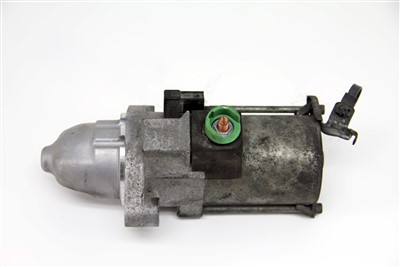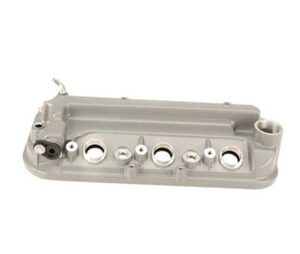Starter
The starter is a vital component in your vehicle’s ignition system, ensuring a smooth and efficient engine start-up.
This compact motor, powered by a reliable battery, plays a crucial role in initiating your car’s operation under its own power. A well-functioning starter is essential for a seamless ignition process.
At the heart of the starter system is the starter relay, strategically positioned between the battery and the starter motor.
This relay efficiently transmits power, ensuring a reliable connection that is integral to the engine’s initiation.
Without a properly operating starter relay and motor, your vehicle may require a tow, leaving you stranded.
Whether you’re considering a replacement or an upgrade, our range of starters, including car starters, remote car starters, and remote start options, guarantees high performance and durability.
Trust in our starters to provide the reliability your vehicle deserves, ensuring a prompt and efficient start every time. Elevate your driving experience with our cutting-edge starter solutions.
$600.00
CompareStarter
The starter is a critical component in an internal combustion engine’s starting system. Its primary function is to initiate engine operation by turning the crankshaft until the engine can sustain its operation. This essential process involves converting electrical energy from the battery into mechanical energy to start the engine. The starter plays a vital role in ensuring reliable engine starting and overall vehicle functionality.
Material and Construction
Starters are built from durable materials designed to withstand the high stresses and temperatures involved in engine starting:
- Steel: The primary structural components of the, including the housing and gear, are typically made from high-strength steel. Steel provides the necessary durability and resistance to the mechanical forces experienced during engine starting.
- Copper: The motor contains copper windings in the armature and field coils. Copper’s high electrical conductivity ensures efficient energy transfer from the battery to the starter motor.
- Aluminum: Some may use aluminum components for weight reduction while maintaining strength and durability.
- Brushes and Commutators: The motor uses carbon brushes and commutators to facilitate the flow of electrical current and enable smooth motor operation.
Design and Functionality
The starter is designed with several key features to ensure effective engine starting:
- Starter Motor: The core component of the motor, converts electrical energy into mechanical energy. It consists of a rotor (armature) and stator (field windings), which work together to generate the rotational force needed to turn the engine.
- Solenoid: The solenoid is an electromagnetic switch that engages the starter motor when the ignition key is turned. It also pushes the drive gear (Bendix) into engagement with the engine’s flywheel or flexplate.
- Bendix Drive Gear: This component engages with the engine’s flywheel or flexplate to turn the crankshaft. Once the engine, the Bendix drive gear disengages from the flywheel.
- Relay: Some systems include a relay that helps control the flow of electrical current to the starter motor, providing an additional level of protection and control.
Performance and Benefits
This contributes to several important aspects of vehicle performance and reliability:
- Reliable Starting: The primary function of the is to reliably initiate engine operation. A well-functioning ensures that the engine starts smoothly and consistently, reducing the risk of starting issues.
- Smooth Operation: By converting electrical energy into mechanical energy efficiently, the ensures that the engine crankshaft turns smoothly, facilitating a successful start.
- Enhanced Durability: A robust motor and associated components are designed to endure the stresses of repeated starting cycles, contributing to the overall durability and reliability of the starting system.
- Convenience: The system allows for an easy and convenient engine starting with the turn of a key or push of a button, enhancing the user experience and operational convenience.
Maintenance and Care
Proper maintenance and care of the starter are essential for ensuring its effectiveness and preventing potential issues:
- Regular Inspection: Periodically inspect the starter and related components for signs of wear, corrosion, or damage. Check the electrical connections and wiring for any signs of wear or loose connections.
- Battery Maintenance: Ensure the vehicle’s battery is in good condition, as a weak or failing battery can impact the performance of the Regularly check and maintain the battery to ensure reliable starting.
- Listen for Issues: Pay attention to any unusual sounds when starting the engine, such as grinding or clicking noises, which may indicate problems with the Address any abnormal noises promptly to prevent further damage.
- Professional Servicing: If you experience starting issues or suspect problems with the, consult a professional mechanic for inspection and servicing. Proper diagnosis and repair are essential for maintaining optimal performance.
Advanced Features and Technologies
Modern starters may include advanced features to enhance their performance and reliability:
- High-Torque Motors: Some are designed with high-torque motors to provide additional starting power, especially for high-compression or performance engines.
- Integrated Solenoids: Modern often feature integrated solenoids that streamline the starting process and reduce the number of individual components.
- Smart Technology: Advanced systems may include smart technology for diagnostics and monitoring, providing real-time data on starter performance and battery health.
- High-Temperature Materials: To withstand extreme engine temperatures, some use high-temperature materials and advanced cooling technologies to ensure reliable operation in demanding conditions.
Conclusion
The starter is a vital component in the engine starting system, responsible for initiating engine operation by converting electrical energy into mechanical energy. Its durable construction, efficient design, and essential functionality contribute to reliable and smooth engine starting. Regular maintenance and timely care of the starter are important for preventing issues and ensuring optimal performance. By understanding the functions and benefits of the starter, vehicle owners can ensure their engine starts reliably and operates efficiently.
Based on 0 reviews
Be the first to review “Starter” Cancel reply
Related products
-
Engine
Valve Cover
0 out of 5(0)The Valve Cover, also known as a rocker cover, stands as a crucial engine component, crafted from durable plastic or metal and securely bolted atop the cylinder head.
Its significance lies in the preservation of engine health and performance by effectively containing oil within the engine.
This integral part prevents oil leaks and ensures optimal functioning. Engineered for longevity and reliability, our valve covers are designed to meet the highest standards, catering to a wide range of vehicles, including LS models.
Each valve cover seamlessly integrates with the engine, forming a secure seal with the assistance of a high-quality valve cover gasket.
Enhance your engine’s longevity and performance with our premium valve covers a testament to precision engineering and durability.
Choose excellence for your vehicle, as our valve covers are crafted to exceed expectations, offering a perfect fit for various car models.
SKU: n/a -
Engine
Engine Block Cover
0 out of 5(0)Crafted from durable plastic, our engine block covers are essential components designed to enhance your driving experience.
These covers serve as effective sound insulators, contributing to a quieter and more refined driving environment.
Beyond their acoustic benefits, these meticulously engineered block covers act as formidable shields, safeguarding your engine from intrusive elements such as dust, sand, and water.
By preventing these contaminants from infiltrating critical engine components like fuel injectors and air intakes, our engine block covers play a crucial role in maintaining optimal performance and longevity.
Experience the perfect balance of functionality and durability with our state-of-the-art engine block covers.
Whether you’re navigating city streets or tackling off-road terrain, trust in the reliability and performance of our product.
Elevate your driving experience with our versatile and high-quality engine block covers.
SKU: n/a -
Engine
Engine Mounts
0 out of 5(0)An engine mount, also known as a motor mount or engine holder, plays a crucial role in securing an engine within machinery, while simultaneously mitigating shocks and vibrations during operation.
Crafted with precision, our engine mounts ensure optimal performance and durability for a wide range of applications.
The benefits of employing our high-quality, rubber mounts are evident:
- Vibration and Noise Reduction: Our engine mounts effectively minimize excess engine vibrations and noise, enhancing the overall operational experience.
- Engine Protection: By preventing excessive vibrations, our mounts safeguard engines from potential damage, ensuring longevity and reliability.
- Extended Lifespan: The robust construction of our mounts contributes to the prolonged lifespan of both the engine and connected sensor components, minimizing the need for frequent replacements.
- Transmission Protection: These mounts serve as a protective barrier, preventing damage to vital parts such as the transmission, thereby optimizing the overall functionality of your machinery.
Choose our premium engine mounts for a reliable and efficient solution that transcends brand distinctions, delivering unparalleled performance across various applications.
SKU: n/a -
Engine
Timing Chain
0 out of 5(0)Introducing our Precision Timing Chain, a vital component meticulously designed to synchronize the intricate dance between the crankshaft and camshaft(s) in your engine.
Crafted for optimal precision, this timing chain ensures seamless coordination, guaranteeing accurate timing for the precise opening and closing of engine valves during each cylinder’s firing cycle.
Built to withstand the rigors of engine dynamics, our timing chain boasts durability that exceeds industry standards.
Engineered for longevity, it operates within the heart of your engine, requiring periodic oil maintenance to ensure peak performance.
When it comes to reliability and efficiency, our timing chain stands as the epitome of excellence.
Experience the epitome of timing precision with our Timing Chain, a testament to engineering ingenuity. Our commitment is to deliver unrivaled performance, setting the benchmark for quality and durability in every rotation.
SKU: n/a -
Engine
Engine Oil Pan
0 out of 5(0)The engine oil pan is a vital component seamlessly integrated into your vehicle’s engine system.
Precision-engineered and crafted, it securely attaches to the engine’s underside using robust bolts, serving as the primary reservoir for oil.
As the heartbeat of your engine, this oil pan facilitates the efficient circulation of oil, ensuring optimal lubrication, cleanliness, and cooling of crucial moving parts.
During an oil change, the oil pan plays a pivotal role in the extraction and replenishment of engine oil, promoting longevity and peak performance.
Designed for compatibility with a variety of engine types, our oil pan exemplifies durability and reliability across all brands.
Engineered to exact standards, it enhances overall engine efficiency by reducing friction between components, mitigating heat generation, and promoting a cleaner, cooler engine environment.
Trust in the quality and versatility of our oil pan, a cornerstone of engine maintenance, whether you prefer conventional or synthetic oil.
Elevate your driving experience with a product designed to exceed expectations.
SKU: n/a









There are no reviews yet.